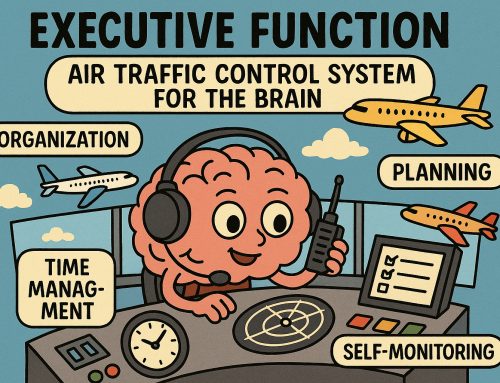What is Houston ISD’s Vanguard Gifted & Talented (G/T) Program?
Approximately 14% of students enrolled in Houston ISD (HISD) are designated as Gifted and Talented (G/T). These students who demonstrate “high performance capability” receive additional state funding that aims to enrich their curriculum. This article takes a deep dive into why parents might want their child to be designated G/T, how to request testing, and what benefits students should expect—and demand.
Defined at the state level, HISD’s G/T Program is intended for K–12 students who perform—or show potential of performing—at an advanced level compared to their peers. These students typically demonstrate one or more of the following:
- Exceptional intellectual, creative, or artistic capabilities;
- Advanced leadership capacity;
- Excellence in a specific academic field
HISD’s G/T programs provide accelerated and enriched instruction tailored to the unique needs of G/T-identified students. All G/T students receive instruction from educators who are trained and certified in gifted education, ensuring a challenging and stimulating learning experience beyond the standard curriculum.
There are 2 program options:
- The G/T Neighborhood Program allows G/T-identified students to remain at their zoned, neighborhood school while participating in a differentiated G/T curriculum. Nearly all HISD campuses—except early childhood centers and select charter schools—offer a Neighborhood Program, making gifted education accessible throughout the district.
- Vanguard Magnet Schools are specialized campuses that serve only G/T-identified students, offering a full-time, advanced academic program. Qualified students may apply for admission through the district’s magnet application process. A complete list of Vanguard campuses can be found here.
What benefits do G/T students receive?
A substantial body of research finds that positive peer pressure is very beneficial in an academic setting, because it enables students to push themselves to improve faster and achieve more. As such, HISD’s best state-approved G/T programs not only provide a more rigorous curriculum but also group G/T students together.
HISD generates additional state funding through the G/T allotment and 100% of this G/T funding must be used to support gifted education services. In addition to the $6,215 basic allotment HISD receives per student based on average daily attendance, the G/T allotment provides an extra 7% for every identified gifted student—approximately $435 per G/T student in 2025-2026.
These funds enable HISD to offer a variety of enrichment opportunities and specialized services designed to meet the needs of gifted learners. While there are many state-approved forms of G/T programming, not all services are created equal nor are they available at every campus. In general, schools with a larger population of G/T students are able to offer more specialized and higher quality programs.
Below is a list of HISD programs for G/T students, which we have ordered from most to least impactful:
- Advanced Programming (AP/IB): TEA allows school districts to use G/T funds to support Advanced Placement (AP) and International Baccalaureate (IB) courses, provided these programs serve G/T students
- G/T students in grades 6-12 are required to enroll in at least two of the four core academic subjects (ELA, math, social science, and science) each year at the advanced or G/T level. Gifted students who do not meet this requirement risk losing their G/T designation within HISD.
- G/T Only Classroom: Some schools offer dedicated G/T classrooms led by G/T-trained teachers who deliver advanced curriculum and enrichment opportunities in a full-time gifted setting.
- Pull-Out/Genius Hour: Schools may pull G/T students out of their regular classrooms to work with a G/T-trained teachers and gifted peers on projects that foster research, problem-solving, communication, and creative thinking skills.
- Cluster Grouping: Gifted students may be placed in a typical classroom setting alongside non-G/T peers. These classrooms are taught by G/T-trained educators who provide differentiated instruction tailored to gifted learners’ needs.
- G/T Expo: Each year, G/T students complete a capstone project to demonstrate their learning and creativity. Students then showcase their work at campus-wide and/or district-wide expos.
For example, highly coveted River Oaks Elementary School (ROE) offers advanced programming (International Baccalaureate Primary Years) while also cluster grouping G/T and non-G/T students together in each classroom.
How does G/T identification work?
Being identified for the G/T program means that a student meets Houston ISD’s criteria for participation in the district’s G/T program, as determined by a scoring matrix. HISD uses two matrices to determine G/T identification:
- Entering Kindergarten
- Entering Grades 1-12 (K-12 Identification Matrix)
Both matrices utilize a point system in which gifted testing scores and other qualifying factors are entered and converted into points.
Entering Kindergarten G/T Criteria
The “Entering Kindergarten” identification process begins with a parent’s request for gifted testing (i.e. parent request). To be eligible for Entering Kindergarten gifted testing, children must turn 5 years old by September 1 of the school year they plan to start kindergarten.
The Entering Kindergarten Matrix consists of points gained through their cognitive assessment scores using the Cognitive Abilities Test (CogAT), which measures reasoning and problem-solving skills. Students can earn up to 63 matrix points from the CogAT (21 points each in the verbal, nonverbal, and quantitative sections). Students scoring at least 24 points qualify for the G/T program. The chart below demonstrates how a student’s CogAT score is converted into G/T Matrix points.
| Percentile | Verbal Points | Non-Verbal Points | Quantitative Points |
| 95–99 | 21 | 21 | 21 |
| 90–94 | 18 | 18 | 18 |
| 85–89 | 15 | 15 | 15 |
| 85–89 | 12 | 12 | 12 |
| 85–89 | 10 | 10 | 10 |
| 85–89 | 8 | 8 | 8 |
| 85–89 | 4 | 4 | 4 |
| 85–89 | 2 | 2 | 2 |
Note: This information is pending verification from HISD through a Texas Public Information Act request.
Unlike the K–12 identification matrix, it does not include teacher input, report cards, or possibility of earning obstacle/bonus points (low socioeconomic status, limited English proficiency, or special education/504 accommodation). This means that entering kindergarten eligibility is determined solely by the child’s performance on the district’s gifted testing measures.
Entering Grades 1-12 G/T Criteria
For students entering grades 1–12, the G/T identification process follows a broader, multi-step approach that incorporates both testing and qualitative measures. The G/T identification process can begin in several ways, including:
- Universal, automatic G/T Testing for all 2nd graders
- Achieving the 80th percentile or higher for reading and math on the 5th or 8th grade Measures of Academic Progress (MAP) test.
- Referral
- Parent request
- Teacher nomination (with parent approval)
- Student self-nomination (with parent approval)
HISD’s K–12 Identification Matrix is more comprehensive and incorporates multiple measures to assess a student’s academic ability and potential. It includes the following components, which together award up to 105 points:
- Achievement Test Scores (Max 40 points or 40% of matrix)
- Based on performance on NWEA MAP Growth (ELA and math) or Logramos assessments
- Students can earn up to 20 points in Reading/ELA and 20 points in Math
- Ability Test Score (Max 30 points or 30%)
- Based on the nonverbal section of the CogAT.
- Students can earn up to 30 points, depending on their score percentile
- Report card (Max 20 points or 20%)
- Grades from ELA, Math, Science, and Social Studies are averaged to calculate matrix points. The table below demonstrates how a student’s average grade is converted into points.
Average Grade (%) Points 95–100 20 90–94 15 85–89 10 80–84 5 - Report Card Type:
- Students enrolled in HISD: First cycle report card
- Non-HISD students: Final report card from previous academic year
- Grades from ELA, Math, Science, and Social Studies are averaged to calculate matrix points. The table below demonstrates how a student’s average grade is converted into points.
- Teacher Observation (Max 10 points or 10%)
- Teachers evaluate students’ gifted characteristics and classroom performance, assigning a percentage score (0–100%) that translates into matrix points (up to 10 points). The table below demonstrates how the teacher observation score is converted into points.
Score (%) Matrix Points 90–100 10 80–89 8 70–79 6 60–69 4
- Teachers evaluate students’ gifted characteristics and classroom performance, assigning a percentage score (0–100%) that translates into matrix points (up to 10 points). The table below demonstrates how the teacher observation score is converted into points.
- Special Considerations (Max 5 points)
- Students may earn up to 5 additional bonus points for certain qualifying factors, including:
- low socioeconomic status,
- limited English proficiency, and
- participation in special education or 504 programs.
- Students may earn up to 5 additional bonus points for certain qualifying factors, including:
After testing, the campus G/T coordinator compiles each student’s gifted testing scores, report card, teacher observation, and possible obstacle/bonus points, all of which are factored into the K–12 Identification Matrix to determine a student’s total matrix score.
What are the G/T tests?
As part of the G/T identification process, HISD uses assessments designed to capture a student’s reasoning skills, academic growth, and overall learning potential. HISD uses two main tests to identify students for the G/T Program:
- CogAT (Cognitive Abilities Test)
- NWEA MAP Growth (or Logramos for Spanish-speaking students).
These assessments measure different aspects of student ability and achievement, ensuring a well-rounded evaluation of each child’s potential.
Entering Kindergarten Assessment
To better understand a child’s natural aptitude for learning, HISD relies on the CogAT, a nationally normed measure of cognitive reasoning. The CogAT measures a student’s reasoning, spatial visualization, and problem-solving abilities across three domains: verbal, quantitative, and nonverbal. Unlike the MAP Growth test, which focuses on academic achievement, the CogAT is designed to assess a student’s innate cognitive abilities rather than learned skills. In all but name, the CogAT is an IQ test.
Pre-K students applying for the G/T program take the CogAT across three batteries—Verbal, Nonverbal, and Quantitative—each with short subtests and breaks in between.
- Verbal Battery: Picture analogies and classification
- Nonverbal Battery: Figure matrices and classification, paper folding
- Quantitative: Number analogies, puzzles, and series
| Battery | Subtest | Time Alloted |
| Verbal | Picture Analogies | 10–15 min |
| Picture Classification | 10–15 min | |
| Nonverbal | Figure Matrices | 10–15 min |
| Figure Classification | 10–15 min | |
| Paper Folding | 10–15 min | |
| Quantitative | Number Analogies | 10–15 min |
| Number Puzzles | 10–15 min | |
| Number Series | 10–15 min |
Students typically receive 5–15 minutes of break time between each battery and subtest.
K–12 Assessments
K–12 students complete both the CogAT and NWEA MAP Growth assessments as part of the G/T identification process.
The CogAT accounts for 30% of a student’s K–12 G/T Identification Matrix. It evaluates verbal, quantitative, and nonverbal reasoning skills, helping identify giftedness beyond classroom performance. General Academic tutors have identified specific ways of helping students boost their performance, such as practicing pattern-recognition puzzles, verbal and number analogies, series completion, and figure matrices. The table below demonstrates how a K–12 CogAT score is converted into G/T matrix points.
| Score | Points |
| 126–160 | 30 |
| 121–125 | 25 |
| 114–120 | 20 |
| 109–113 | 15 |
| 104–106 | 10 |
| 100–103 | 5 |
The MAP Growth is a TEKS-aligned, adaptive assessment that measures student achievement and growth in K–12 Reading/ELA and math. It accounts for 40% of a student’s G/T Identification Matrix.
- Similar to standardized tests in school, students can prepare for the MAP Growth test by strengthening core academic skills in reading comprehension, writing, and math skills.
- Spanish-speaking students may take the Logramos 3 assessment as an alternative.
| National Percentile Ranking | Matrix Points Earned |
| 95–99 percentile | 20 |
| 90–94 | 16 |
| 85–89 | 13 |
| 80–84 | 10 |
| 70–79 | 7 |
Matrix Score Requirements for K–12 G/T Qualification
There are four (4) ways a student can earn G/T designation in HISD. Note that students who are designated as G/T for Reading also automatically qualify for social studies G/T services. Students who are designated as G/T for math also automatically qualify for science G/T services.
First, students who score 62 points or more automatically qualify for Vanguard magnet programs and G/T services in all four core subjects (math, ELA, social studies, and science).
Students who score 61 or less matrix points can still be identified as G/T if they meet testing thresholds; however, only students who qualify as G/T in both reading and math may apply to Vanguard magnet schools and receive G/T services in all core subjects. Please see below for the three additional ways to earn G/T designation:
- Testing Qualified:
- Students can also qualify for Vanguard magnet programs and G/T services in the four core subjects by meeting all of the following criteria
- 56–61 total matrix points,
- 20+ matrix points from MAP Growth
- 10+ matrix points from CogAT
- Students can also qualify for Vanguard magnet programs and G/T services in the four core subjects by meeting all of the following criteria
- Reading Only Qualification
- Students can qualify for G/T services in ELA and social studies by meeting all of the following criteria
- 42–61 total matrix points
- 16+ matrix points from ELA portion of MAP Growth
- 5+ matrix points from CogAT
- Students can qualify for G/T services in ELA and social studies by meeting all of the following criteria
- Math Only Qualification
- Students can qualify for G/T services in math and science by meeting all of the following criteria
- 42–61 total matrix points
- 16+ points from the Math portion of the MAP Growth
- 5+ points from the CogAT
- Students can qualify for G/T services in math and science by meeting all of the following criteria
| Qualification Type | G/T Service Qualification Type | Matrix Points Range | Additional Requirements |
| Both Reading & Math | ELA, Math, Social Studies, Science, Vanguard campus | 62-105 points | N/A |
| Both Reading & Math | ELA, Math, Social Studies, Science, Vanguard campus | 56–61 points | 20+ points on MAP Growth and 10+ points on CogAT |
| Reading Only | ELA, Social Studies | 42–61 points | 16+ points on ELA MAP Growth and 5+ points on CogAT |
| Math Only | Math, Science | 42–61 points | 16+ points on Math MAP Growth and 5+ points on CogAT |
When do I register my student for G/T testing?
Parents can register their students for gifted testing around the start of the school year in late summer. All students who live within HISD boundaries and not currently G/T-identified in HISD are eligible for gifted testing once per school year. HISD students must test at their current school, and students who are not yet enrolled in HISD must test at the HISD school to which they are zoned. The annual deadline to request G/T testing is typically in August or September, with this year’s deadline being September 16, 2025.
When are the G/T testing windows?
Outside of universal G/T testing opportunities during which every student is automatically tested, parents or guardians must formally request that their student be tested for G/T identification.
Automatic universal G/T testing occurs three times through 8th grade:
- 2nd grade universal G/T testing
- 5th grade MAP test
- 8th grade MAP test
The annual pre-K testing window typically occurs from September to October. Testing occurs at the student’s enrolled or zoned HISD campus.
- Students must be five years old on or before September 1 of the eligible enrollment school year to be qualified for the Entering Kindergarten G/T Test
- Students who turn five years old before September 1 of the testing year will take the Kindergarten Test
If you would like your K–12 student to be tested outside of the universal testing opportunities, you must request testing in August–September. The request link remains open for three weeks. To receive an email with a direct link to the testing request form as soon as it becomes available, be sure to complete the Testing Interest Survey in May. The annual K–12 testing window typically occurs from early to mid September.
When do I receive my student’s G/T Test Results and Identification Matrix?
If your K–12 student is enrolled in HISD, test results become available before the School Choice application opens (typically in December). Results are sent home by the G/T Coordinator and matrices can be accessed through the HISD Parent Portal typically in December. Your enrolled pre-K4 student’s results will be released a few weeks after the Office of School Choice application opens.
For students not enrolled in HISD, test results are typically released in December and must be picked up from their testing campus (i.e. where they took the test) before the end of January (annual deadline varies).
Do Gifted & Talented programs further inequality in education?
G/T programs are widely considered inequitable due to significant underrepresentation of Black, Hispanic, and low-income students, stemming from systemic issues like seemingly biased identification methods, unequal access to early enrichment, and socioeconomic factors. G/T programs are considered so unfair that particularly progressive districts like Seattle Public Schools or New York City Public Schools are in renewed debates about terminating G/T programs.
However, there’s no argument that G/T programs do not benefit the enrolled students; the debate is whether or not every child has equal access to G/T programs. While substantial challenges remain for education administrators around equitability, Houston parents have a clear path forward:
- understand programs available to G/T students
- determine how to get your child designated as G/T, and
- do everything you can to make sure your child meets those criteria.
Read More about K–12 Academics and Houston-area schools from General Academic





